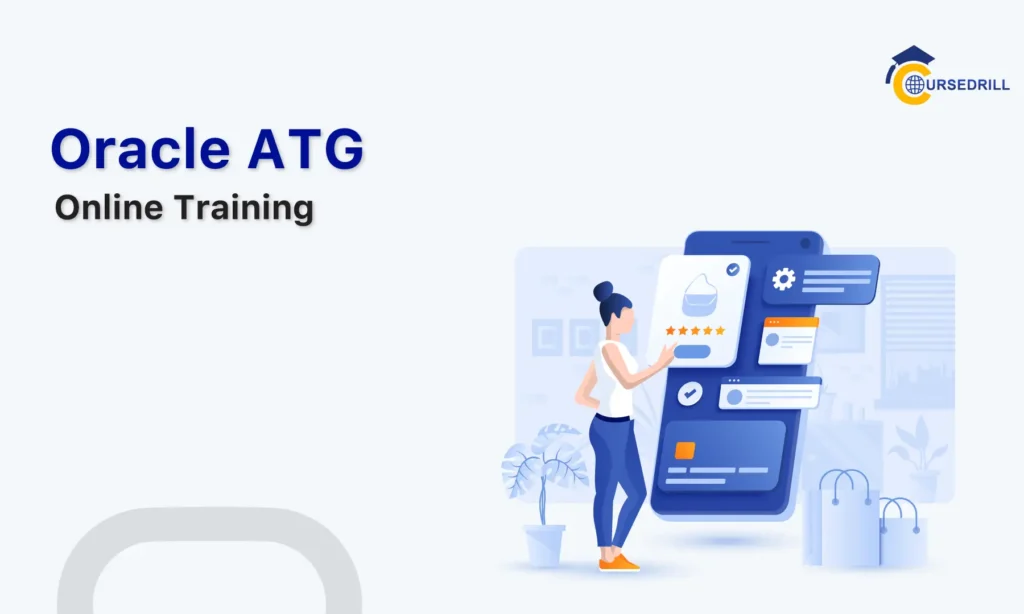- Posted on
- admin
- No Comments
Pega Interview Questions: Best User Guide to Clear Your Pega Interview
Are you someone who is looking for the right material to clear your Pega interview in the very first attempt or feeling it as a challenging task? Well if this is the case with you, you are at the right place! Pega is one of the widely used BPM tools in the market and offers innovative features to match modern business requirements.
To help our readers with the top interview questions and to simplify their interview preparation process, our Pega experts at Coursedrill have gathered a list of Pega interview questions and presented them here with clear answers. Learning these Pega questions would help you gain the confidence required to perform well in your interview.
To streamline your learning process we have divided this blog into two parts:
- Basic Pega Interview Questions
- Advanced Pega Interview Questions
Let’s get into the blog now!
Basic Pega Interview Questions Topic Wise
1) What is BPM?
Any business has to perform a series of steps to accomplish a task and this entire life cycle is called a business process. A BPM tool is something that provides a simple yet systematic approach to perform any given operation in an optimized way. The major goal of implementing a BPM tool is to plan, design, implement and automate business operations while minimizing errors, miscommunications, and inefficiencies.
If you wish to learn Pega or seek Pega career advice from experts,
you can enquire here at Pega training.
2) What are the Advantages of using BPM software?
Following are the top benefits that any business can leverage from implementing BPM:
- Improved productivity
- High flexibility
- Minimized errors
- Easy implementation of policies
- Eliminated Micromanagement
- Simplified data accessibility
- Easy Data Migration between multiple systems
- Supports digital transformation journey
3) What are the different types of BPM tools?
Following are the three different types of BPM tools:
- System Centric
- Human-Centric
- Document Centric
4)What are the typical BPM implementation areas in a business?
Following are the typical departments that use BPM for automating tasks and to improve the business process:
- Finance
- Sales
- Human resource
- Marketing
5) Name a few well-known BPM tools?
There is a wide range of BPM tools available in the market and the following are some of the widely used BPM tools are:
- Pegasystems
- BP Logix
- Kofax
- Tibco Software
- Oracle
- Appian
- IBM
6) What is Pega?
Pega is a widely used BPM software built using java that helps in building modern enterprise applications. It comes with advanced features to simplify the complex app building process and saves a lot of time. Pega powers the digital transformation process of the business by unifying leading technologies like artificial intelligence and customer engagement capabilities.
Pega comes with many advanced in-built components and supports various internal as well as external database integrations. Moreover, it also has a best-in-class configuration management system. All together these features have made it possible to build web-based apps compared to Java.
7) What is the Pega Latest version?
The latest Pega version is 8.6
8) What are the advantages of Pega?
Following are the top advantages of Pega:
- Build solutions faster
- Build smarter.
- Complete platform
- Builds responsive and social applications
- Takes less effort to design applications
- Supports all types of servers and databases
- Brings systems together
9) What is a workspace in Pega?
In Pega Workspace is defined as an environment and it consists of different features and tools to help human resources in executing their assigned tasks smoothly. There are different workspaces available in Pega that support the development and managing of web-based applications.
Pega comes with four role-based Workspaces called studios:
- Dev Studio
- App Studio
- Admin Studio
- Prediction Studio
10) What is meant by Classes in Pega?
Pega platform supports rules reuse between applications and use cases. Rules reuse helps in simplifying the work for developers and improves app quality. Pega platform groups the rules into a class based on their reusability within the application and each grouping is called class.
11) What are the different types of classes available in Pega?
In Pega each platform consists of 3 different classes and which are as follows:
1) Work Class: This class contains the rules to provide an approach to execute a case or case. Examples of cases include user interfaces, data elements, and user interfaces.
2) Integration Class: This class describes the way an application interacts with other systems.
3) Data Class: This class describes the data objects that have been used in an application.
12) Types of SLA?
SAL is one of the essential features available in Pega and stands for Service Level Agreement. Following are the different types of SLA:
- Assignment SLA
- Case Level SLA:
- Stage Level SLA:
- Step level/Flow level SLA
Advanced Pega Interview Questions and Answers
13) What is the Page -Validate method?
The Page – Validate method is used to validate all the properties available on a page. This method requires a lot of system resources and time taking. If in case a page contains embedded pages this method works repeatedly to validate overall properties. Whenever you want to validate any particular property on a page you need to use the obj-validate method.
14) What is the Property -Validate method?
The core aim of using the Property-validate method is to impose restrictions on a property value. In order to impose any restriction on a property value, you are required to use the Edit validate rule along with the Property validate method.
15)What is meant by the page list property?
A Page list property is an embedded list of ordered pages and referenced by a numeric script. This method is helpful for storing the lists of data.
16) What is a “Page Group” Property?
The Page Group property is quite opposite to the Page list property and contains an unordered list of pages referenced by a string subscript. This is the best way to look into the pages by unique identity number.
17) What is a Work Object in Pega?
A Work object in Pega is defined as a primary unit of task completion in an application and also a collection of data. In general, whenever application functions, the work objects are created, modified, and closed. In Pega, each work object is assigned with a unique ID, urgency level, and final status.
18) What do you know about SLA?
In Pega, the Service Level Agreement (SLA) feature has been used to set a deadline for work completion. This feature enables the organization in making the employees focus on the task at hand and to gain on-time performance.
19) What is Pega DCO?
In Pega, DCO stands for Direct Capture of Objects and is considered an essential component for the success of any object. It is a process to capture, organize and store business data by using the Prga Integrated solution. The DCO consists of different components and tools required to collect and organize application information.
20) Name a few tools used by DCO to automate work?
- Case Lifecycle Manager
- New Application Wizard
- Application profiler
- Document generation
- Effort estimation
- Specification documents
21) What is the use of Layouts?
Layouts are one of the essential components of Pega and help you organize UI elements on the screen.
22) Name a few layouts available in Pega?
Following are the different types of layouts available in Pega to create a user interface for your application:
- Dynamic Layout
- Column Layout
- Layout group
- Dynamic Layout group
- Repeating dynamic layout
- Navigational tree layout
- Screen layout
- Table layout
23) Define Ruleset in Pega?
In Pega, a ruleset is defined as a packaging or grouping of rules for distribution as a part of an application. A ruleset usually identifies, stores, and manages a set of rules.
24) What is an Access Group?
In Pega access group is defined as a set of permission within an application. Pega platform makes use of this permission for different uses which include external system access, operators, and background processes.
25) What is Case Management?
Case management is an approach to deliver goal-oriented results by effectively handling business cases from prevailing to result in phases by combining human actions with digital automation.
26) Define the Decision tree rule in Pega?
In the Pega platform, the decision tree feature helps in handling logic actions when you execute a set of test conditions. Decision trees help the users in evaluating easily against different properties and conditions.
27) Explain the worklist in Pega?
Worklists in Pega are a list of open assignments that are waiting for a user to execute them.
28) What is a work basket in Pega?
Workbasket is a queue of overall assignments that can be accessible by participants who have connections to the basket through their work Group.
29) Define Forward & Backward chaining in Pega?
Forward Chaining: This can be executed whenever the value of source property changes. For instance: 5 =2+3. Here the source property is 5.
Final Thoughts:
With this we have come to the end of this frequently asked Pega interview questions and answers blog. BPM has become an internal part of almost all organizations to improve processes and achieve greater results. BPM tools have been changing the business landscape in managing projects and partnerships. Pega has been constantly coming up with new features to match the modern business process requirements and remain in the leader position with innovativeness. All the very best for your next interview and happy reading!
Author Bio
Venkatesh is a content writer at CourseDrill. His passion lies in writing articles on the IT platforms including Machine learning, Workday, Sailpoint, Data Science, Artificial Intelligence, Selenium, MSBI, and so on.
Popular Courses



